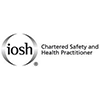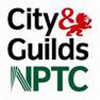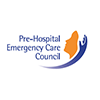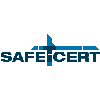Driver CPC Module 3 Training
This module deals with the ability to assess emergency situations. In this module we will be looking at what is the best advice to drivers when they encounter emergency situations. We will cover the list of Dos and Donts on arrival at the scene of an accident. We look at how to deal with damage to your vehicle and also how to best avoid further complications at the scene of an accident/breakdown. We will also explore the different emergency services throughout Europe and the types of services offered in emergency situations.
CPC module 3 is for Health and Safety for the Professional Driver.
Upon successful completion of the day long course candidates will be awarded a Drivers Certificate of Professional Competence.
Driver CPC is a Certificate in Professional Competence for professional bus and truck drivers. Its purpose is to set and maintain high standards of safety and driving among drivers of trucks and buses across Europe.
Who Driver CPC affects?
Driver CPC affects all bus and truck drivers who hold a relevant full license from the 10th of September 2008 and the 10th of September 2009 respectively. If you drive a bus professionally (i.e drive and get paid for it) you will need to undertake Driver CPC training. This applies to all professional bus drivers whether they are full time or part time and whether they drive on public or private roads.
Drivers must complete 1 module per year in order to drive professionally.
(it is not necessary to complete more then 1 module per year)
Objective heading
Ability to assess emergency situations.
Directive text
Behavior in emergency situations: assessment of the situation, avoiding complications of an accident, summoning assistance, assisting casualties and giving first aid, reaction in the event of fire, evacuation of occupants of a lorry/bus passengers, ensuring the safety of all passengers, reaction in the event of aggression: basic principles for the drafting of an accident report.
Training Aim
On completion of this module you will be able to:
Assess the situation and name the correct procedure to prevent further damage.
Apply the basics of first aid.
Explain how a fire develops and determine the risk for explosion.
Interpret the specific labels on vehicles and goods that require special attention. Know how and where to find information
Describe the risks of accidents and incidents for society in case of accidents and incidents.
Fill in an accident report and give an oral report.
Describe the procedure when, how, to react when confronted with an accident or incident.
Describe how damages can affect the human body.
Describe how to prevent damages.
On successful completion of the course, delegates will receive a ASL Certificate of attendance . Their details will also be uploaded to the Road Safety Authority Driver CPC register.
As per RSA Regulations drivers must 35 hours of periodic training over the next five years. Training is on a one-day-per-year basis.





















